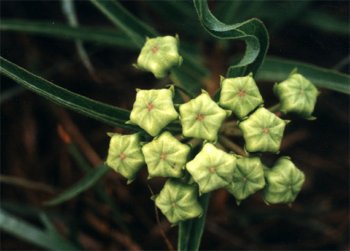Milkweeds
by Valerie (October 5, 2000)
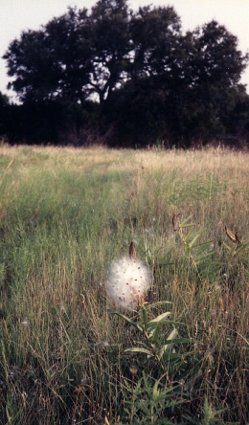
Some plants just fit into the environment in a little way, while others have a major impact on all sorts of creatures. One of these is the milkweed genus. There are quite a number of milkweed species, and they grow all over the U.S. Many milkweed plants host a whole community of insects, including aphids and their predators, milkweed bugs and specific beetles, and the milkweed butterflies, the best known of which is the monarch. The thick, milky sap contains glycosides, which are poisonous, thereby making the insects that feed on the plants toxic to predators. 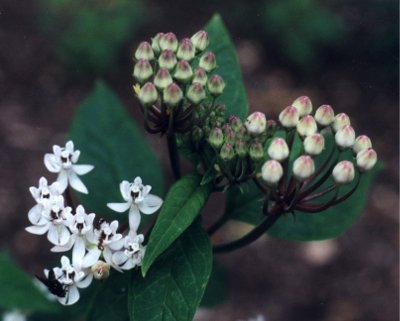 Growing up in Illinois, the feature I remember most about milkweeds was the downy seeds spewing out of the ripe pods. Nothing is as silky or soft as the newly emerged fluff with their little cargo of brown seeds. 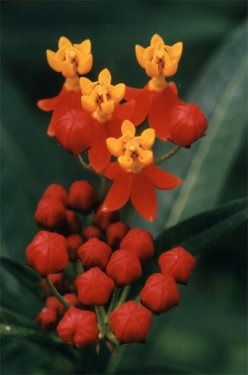
In terms of sheer complexity, the milkweed flowers are a delight. The corolla consists of five united petals and the middle contains a disk of five joined stamens supported on the pistil. The flowers are usually rather thick and waxy looking, and the various species have remarkably different blooms ranging in color from greenish to white, yellow, orange and red.
The type of milkweed most often used in gardens in this area is called butterfly weed (Asclepias curassavica). This is a rather tall plant, reaching about four feet, but often remaining small due to lack of moisture and heat stress. This perennial is easy to start from seed, but grows slowly and often dies off after severe summers, as if the final straw is a good freeze. Two similar species I've seen in gardens around here, but not grown in ours, have all white flowers and all orange flowers respectively.
One of the more common kinds of milkweed in this area is the antelope-horns (Asclepias asperula). This plant is also called spider antelope-horns and immortal plant, referring to its medicinal properties. It is a low growing plant, with an extremely large, deep root. It only blooms when conditions are right, but can withstand extreme drought and high temperatures.
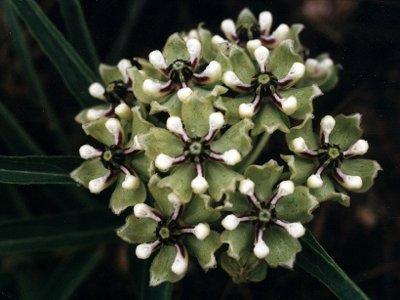 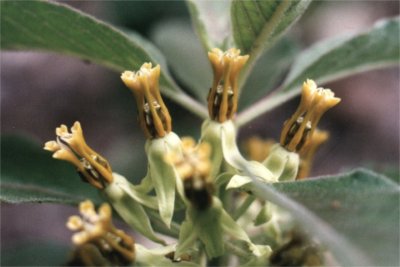 |
